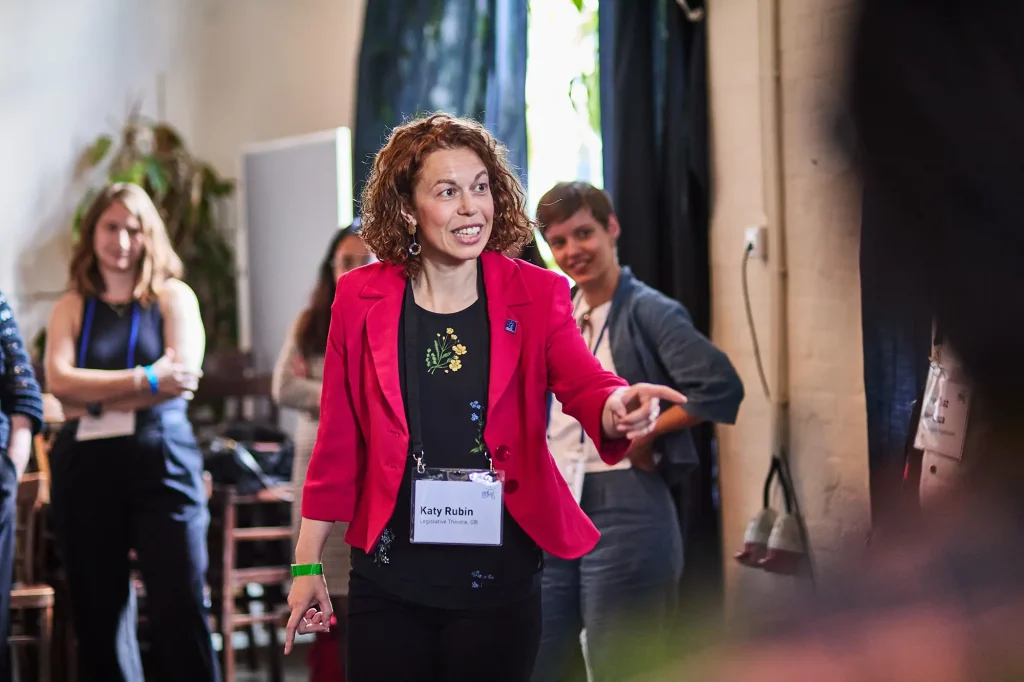
Katy Rubin
USA) for TONYC
Overview
Title of the Intervention : Can’t Get Right
Entity that promoted the initiative: Theatre of the Oppressed New York – TONYC Legislative Theatre, Ali Forney Center (AFC)
When it was implemented? For how long? : 2014
Numbers of participants: 6 actors (AFC)
Where we are: New York City
Place/Places: Legislative Theatre Festival 2014, Theatre performances in different places
Period/Time available: Forum Theatre plays + legislative part = minimum 3 hours
Aim/Goal of the action – Main theme of the Legislative Proposal to Propose/Support
To address police discrimination against LGBT and gender non-conforming individuals.
Which level of change the entity want to reach?
City-wide policy change
Public position of the proposing entity:
– What was the public position of the proposing entity, and its relationship with the community?
AFC supports LGBT and gender non-conforming individuals who are facing homelessness.
– What was its stance on the subject of the intervention?
Non neutral starting point. TONYC and AFC were aware of plans for legislation that would introduce a new city-wide ID card. They decided to use this opportunity to ensure that this ID card would be gender inclusive.
What is the connection to the decision makers? Which power the entity has?
TONYC invited NY City Council Member Carlos Menchaca to participate in the LT event. Menchaca had authored the legislation to introduce the IDNYC and was sympathetic to the issues presented in the play. The City Council had the power to introduce and amend the IDNYC.
Target
New York City Council
Internal Allies
Three different TONYC troupes — the Center for Alternative Sentencing and Employment Services (CASES), the Ali Forney Center (AFC), and Housing Works.
External Allies
The Bronx Defenders, Police Reform Organizing Project (PROP) at the Urban Justice Centre, New York Civil Liberties Union (NYCLU)
Describe each steps of the initiative
Community Group Start, Sharing Stories, and Clearing Play. With the group, the story that will escalate into Legislative Theatre is the one being discussed right now. Whichever moment is a good moment for that issue—if it’s possible to move forward—let’s go there and work on something already in discussion or asked for by politicians or stakeholders.
Invite policymakers — “Power Rangers, Policy Rangers” — not just one type of policymaker; you want different kinds of powers, and also activists. In the audience, invite people working on the issue from different angles.
Forum Theatre Plays: articulate what was behind the interventions. Have someone on a projector writing down everything that comes out.
Warm up — see the play — don’t just follow one character; zoom out as much as possible to reveal the legislative issues so we know what we want to change, ideally.
What problems do you recognize? Which rules create these problems — design, structure?
Interventions: actors should be prepared to react to the new reality (if the rule changes, which other problems will remain?).
Small groups of 2–3 people write one proposal each.
Intermission. The policy team categorizes the proposals. The audience can assist with the discussion, helping to turn them into a few bigger proposals.
Back from intermission: look at the proposals on the screens — what is still missing? Live amendments.
Vote to prioritize: choose the proposal that will make the biggest difference.
The policy team states their commitment: which first action they will take in the next 8 weeks.
After 8 weeks, check and report on how much has been done.
Reflections and Methodology
Outcomes and Impact
Resources and Contacts
Contact person: Katy Rubin; Liz Morgan (TONYC)
Materials, links to consult:
Other interesting things: The other ongoing legislative theatre processes in UK and the research being conducted on legislative theatre -> see link above
